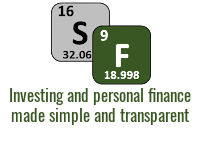7 Under-Utilized Dow Benefits
1. 401k Match
Most employees know Dow will match 5% of your salary if you contribute 6%+ to your 401k. However, don’t forget this also applies to your performance award. There’s a separate elections box in Fidelity NetBenefits to choose 401k contributions on your PA. Don’t miss out on this free money.
2. Life Insurance
Dow provides company-paid life insurance of 1x your salary. In addition, you can purchase multiples from 1x to 8x your salary through Dow benefits. This term life insurance is competitively priced and could be an enormous help to your family in a worst-case scenario. Take a moment to consider what would happen financially to your family if you died. Choosing additional life insurance through Dow is usually a very good decision.
3. Employee Stock Purchase Program (ESPP)
Dow’s ESPP allows an employee to contribute up to 10% of their salary to buy discounted company stock. Dow’s program uses a lookback feature in which the discount is at least 15% and can be much greater. The stock is immediately vested and can be sold as soon as it’s received. It’s close to free money for those who can plan cash flow. Do the math and it’s usually a couple thousand dollars earned with minimal risk and effort.
4. High Deductible Health Plans
Many employees are turned off by high deductible health plans, but in the vast majority of cases for Dow employees, they’re much cheaper. Yes, a $3750 higher family deductible is large, but don’t forget about the $4500 lower premiums (2023). The higher deductible might be spent, but the lower premium is a guaranteed savings. Also, the deductible (unlike premiums) is accounted in the max out of pocket. A year with very small or very large medical expenditures typically saves several thousand dollars. In some years, the premium difference has made it impossible to spend more through the high deductible plan. If you’re still using the low deductible plan, it may be time to reconsider.
5. HSAs
Even if you’re in a rare scenario which favors Dow’s low deductible health plan, the benefits of the HSA should push you to use the high deductible plan. Health savings accounts (HSAs) are quadruple tax-free. There are no taxes on the way in, the way out, or on gains. In addition, it’ll avoid FICA taxes when paid through Dow’s payroll. If you’re in the 22% marginal tax bracket, you’ll save nearly 30% (22% federal +7.65% FICA). On an after-tax basis, that’s $100 in an HSA vs $70 in a 401k or Roth IRA. If you max the HSA ($7750 in 2023), that’s $2300 tax savings over the already valuable tax-advantaged 401k and Roth IRA accounts. Ideally, HSAs should be left to grow for long periods. If managed correctly, withdrawals can be taken in retirement based on health expenditures throughout your lifetime. Many think of HSAs as a super-charged retirement account rather than a typical medical reimbursement account.
6. Legal Assistance
Married or have kids? If so, I encourage you to consider Dow’s legal assistance option. We all procrastinate on estate planning, but it’s important. You can enroll in Dow’s legal assistance program for one year and get all the documents done. Isn’t it better to have Dow pay the bill? Here are some legal documents to consider:
- Wills – declare where your assets go and what happens to minor children
- Power of Attorney – authorizes a trusted person to act on your behalf (ex: contracts)
- Medical Power of Attorney – appoints a trusted person to make health care decisions on your behalf
- Advance Medical Directive – express your last wishes regarding the sustainment of life (ex: resuscitation, mechanical ventilation, nutritional assistance)
7. After-Tax Contributions & In-Service Withdrawals
aka “Mega-Backdoor” Roth conversions. Do you make too much to contribute directly to a Roth IRA, or feel limited by the $7,000/yr Roth IRA contribution limit? If so, I hope you know about the mega-backdoor Roth IRA. Maybe you’re already maxing your pre-tax 401(k) ($23k in 2024). Did you know a Dow employee can also contribute up to $14,950 to the after-tax designation through payroll and roll that money into a Roth IRA. Nearly $15k into a Roth IRA per year with no income limitations! This is a superb option for high savers or individuals who seek an early retirement.


